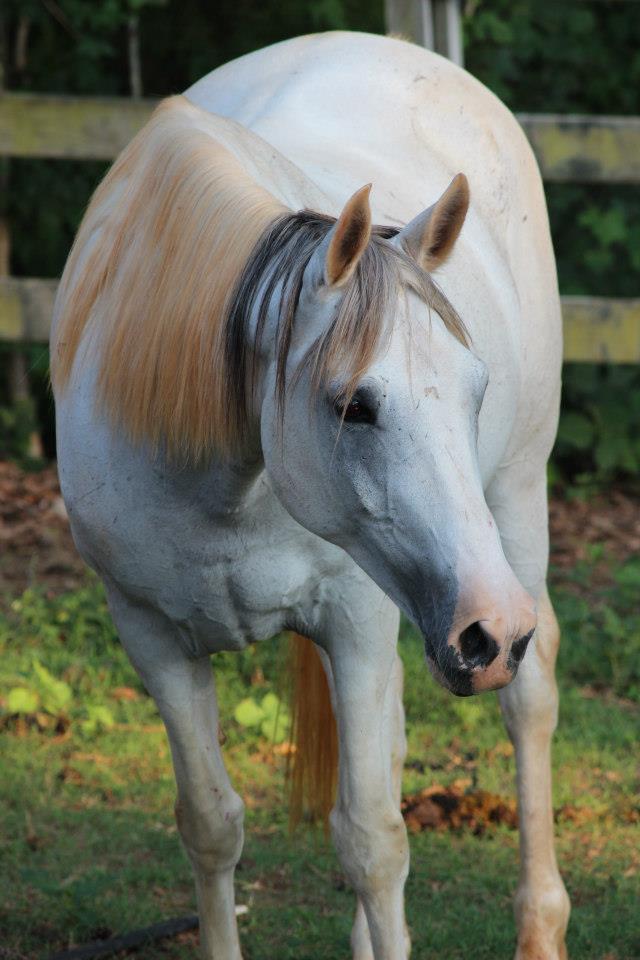
Like many riders today, I find myself looking for more humane ways to communicate with my equine partner. After all, riding should be fun for both of us! I know that bitless options are often considered gentler than bits, but there’s a confusingly large selection to choose from. In this article, I will provide a review of two popular hackamores, the Little S Hackamore, and the Flower Hackamore. I will also briefly touch on a few other bitless bridles and hackamores I have used in the past. Hopefully, it will help others decide on the bitless bridle that would be best for you and your horse. Please check out my video review of The Little S and Flower Hackamore here :
The Little S Hackamore
This hackamore is very popular with endurance and trail riders. It can come with a waxed rope noseband, leather noseband, or biothane one. The one I bought had a rope nose, which I removed because I felt it would be too abrasive. I replaced it with leather. It usually comes with a curb chain instead of a curb strap, however Zilco offers one with a biothane nose and chin strap.
This hackamore is a fairly gentle one. It could be compared to a mild curb bit. It seems very easy for most horses to understand, whether direct reining or neck reining. It has a clear release of pressure that makes it more pleasant than some other bitless options. Both of my horses seem comfortable with loose reins and with light contact in the Little S. This is my favorite bitless bridle by far. I feel confident using this hackamore at home and on the trails. I use it consistently with my Spotted Saddle Horse gelding. The Little S is an excellent choice for most horses going bitless. Here is a link to find the Little S hackamore:
The Flower Hackamore

This hackamore interested me because it is adjustable for different levels of control. It is not well known here in the US, but seems popular in the UK. I purchased this one from Ebay made by Zilco, , and it came with a biothane nose and chin strap.
My initial impression of the Flower Hackamore is that it rides very similarly to a simple snaffle. Unlike some bitless options, this hackamore allows for steady contact with your horse. I will stress, however, that this hackamore needs to be almost snug on the horse’s face. You only want a finger to fit between it and their nose and chin. If it is too loose, this will happen when you try to turn using a direct rein:

After some tightening, it stayed secure during turns. I did feel like it lacked some control as compared to the Little S. It would be ideal for a sensitive horse who has solid training, or for a young horse during it’s early education in a controlled setting. I would not suggest this for a horse that tends to lean on your hands, or gets strong in exciting situations. It seems comfortable for the horse and I will continue to use it at home and in my ring. Here is a link to find it on Ebay:
Jumping Hackamore
This is a leather noseband that attaches to a headstall. It is somewhat flexible but holds it’s shape. The noseband sits off the horse’s nose unless the rider engages it to turn or stop. It works like a western bosal in that way. Because of the design, it offers clear release and signals to the horse. It cannot be used to ride with contact like a snaffle for the same reason. It is often used for jumping horses who need speed control and direction during their course of jumps, but don’t require consistent contact from the rider. I would recommend it for a horse that relies more on seat and leg aids.
I had one of these years ago, and my Rocky Mountain gelding loved it. ( He is very naturally gaited and does not need contact to maintain gait ). Unfortunately, I left it at a friend of a friend’s barn, and have never replaced it. You can learn more about it here: http://amzn.to/2tejuIx
Dr. Cook’s Bitless Bridle
This was the first bitless bridle I tried more than ten years ago. It is a headstall that has a strap that goes over the poll (where the throatlatch would normally be), crosses under the jaw, and passes through rings on the noseband. When the rider engages the left rein, the horse feels it on the left side of the nose, under the right side of the jaw, and up to the poll. The opposite is true for the right rein. When both reins are engaged the pressure comes from the nose, under the jaw and the poll. It can be ridden with direct reining or neck reining. Contact can be achieved with it similar to a snaffle. Sometimes the pressure does not release quickly, and it can be confusing or overwhelming for the horse.
I used this on a sensitive Arabian gelding who did not tolerate a bit well. Over time, the slow release and vise-like action caused him to start grinding his teeth and swishing his tail. These behaviors disappeared as soon as I switched him back to a bit. For this reason, I don’t personally think the Dr. Cook’s bridle is more comfortable than a bit for sensitive horses. It has remained popular among many riders even today, however, suggesting that many horses are comfortable in it. You can learn more about it here:
So there are a few options to consider if you want to try bitless with your own horses!

